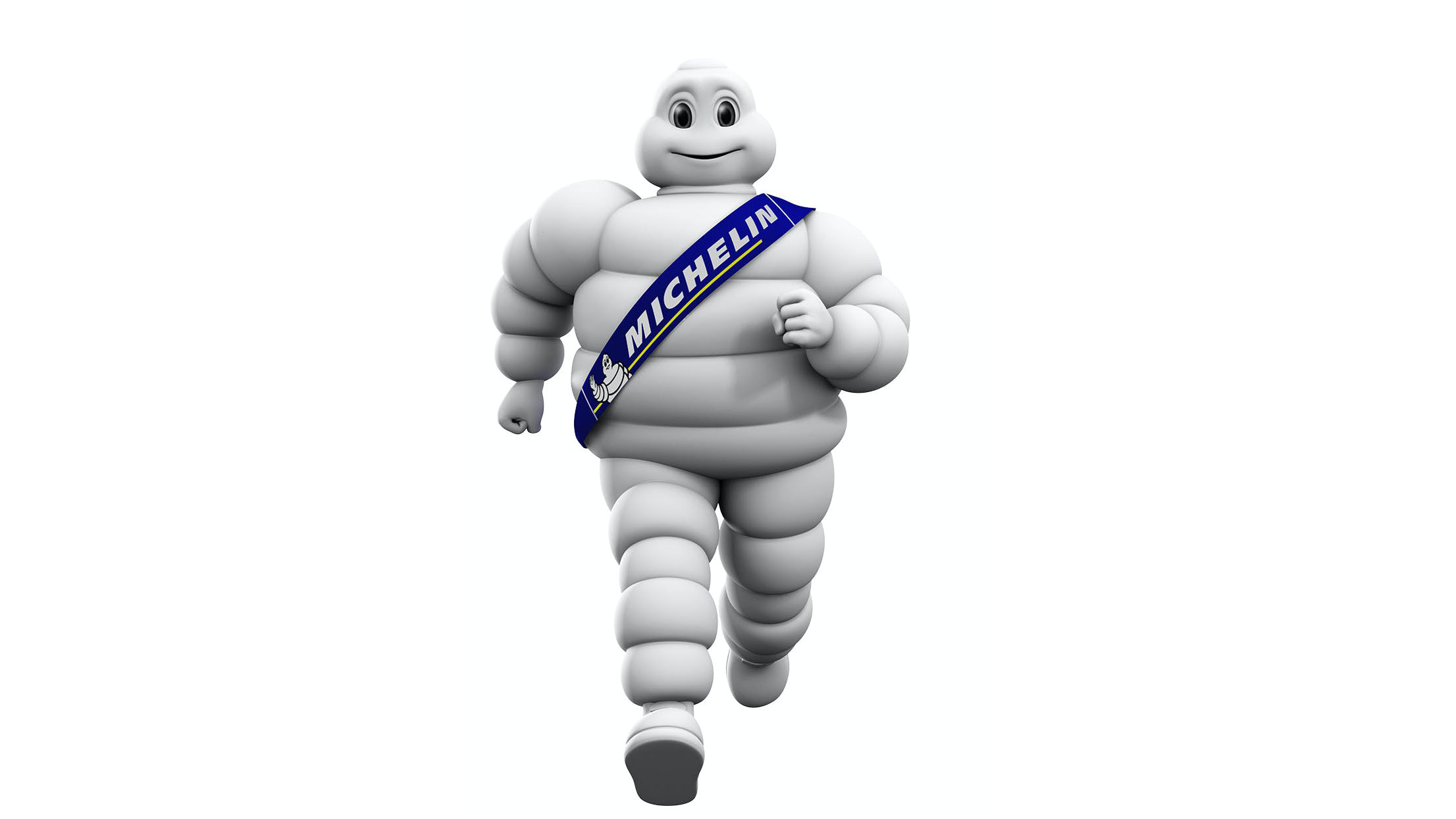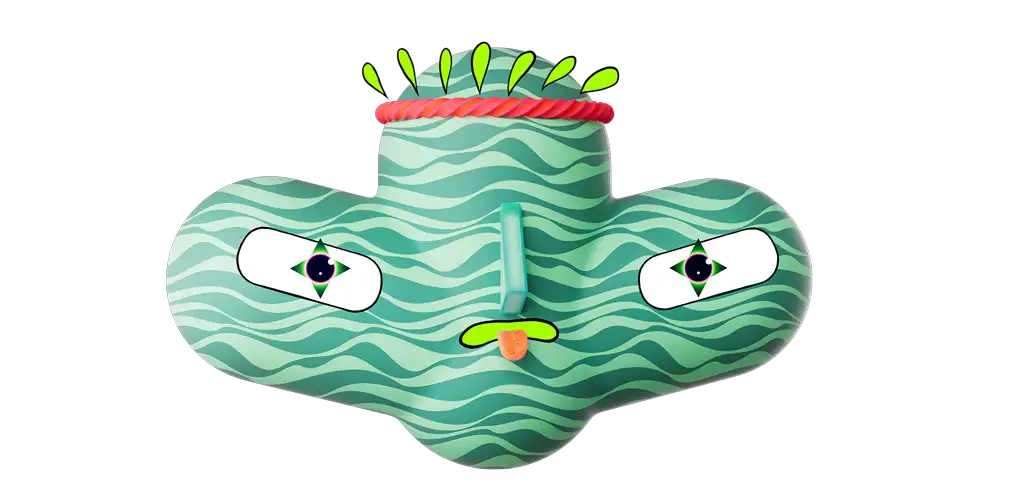3D Mascots play a crucial role in a company's branding strategy, serving as a key character that represents the brand's identity.
They're like a friendly face that helps people connect with companies.
When you see a cool mascot, you're more likely to remember and like the brand. Mascots make things feel more personal, which is great in a world where most of our shopping and stuff happens online.

Taking Mascot Design Beyond Just 2D
Mascot design has evolved beyond traditional 2D graphic design illustrations or mascot logos, embracing a more sophisticated and dynamic approach.
Nowadays, mascots are made in 3D, which means they look more real, and with the flexibility of 3d, they can do a lot more things.
They're not just static pictures anymore; they're like mascot characters that can move around, show feelings, and even talk.
This change is great for businesses because mascots become much more interesting and fun for people to see and remember.
Here are some key benefits of using mascots in branding and marketing:
- More Engaging:
The mascot is a character, so with the help of 3D animation, it can now move and act, which grabs people's attention more than a simple drawing. - Stronger Connection:
Since they can show emotions and actions, people can relate to them better, making a stronger emotional connection with the brand. - Memorable Branding:
A well-designed mascot personifies brands and stays in people's minds, making them remember the brand image more easily. - Versatile Marketing Tool:
Mascots are used in many different ways - in ads, social media, events, and more, making them a flexible tool for marketing campaigns. - Enhances Storytelling:
Mascots serve as storytellers, embodying and conveying a brand's values in a way that makes the brand's message more captivating and easier to grasp. - Appeals to All Ages:
Everyone from kids to adults can find mascots appealing, widening the audience reach for a brand.
The Diverse World of Mascots
Mascots are popular in marketing. So the realm of mascots in branding and marketing is wonderfully diverse, encompassing a range of types that cater to various brand identities and target audiences.
Here's a look at the primary types:
- Human-Like Mascots:
These mascots are designed to resemble humans, often exuding characteristics that resonate with the company's values or the target audience's aspirations.
These mascots can range from realistic to cartoonish.
They are particularly effective in forming a direct, relatable connection with viewers, as they can exhibit a wide range of human emotions and actions.
Brands aiming to project friendliness, relatability, or personality often opt for human-like mascots.

- Animal-Like Mascots:
Animal mascots are incredibly popular, and for good reason.
They can either be realistic or anthropomorphized (given human traits).
These mascots are fantastic for companies looking to convey specific attributes associated with the chosen animal – like wisdom (owl), speed (cheetah), or loyalty (dog).
They are also very appealing to a broad demographic, including children, making them suitable for family-oriented brands or products.

- Object-Like Mascots:
These mascots are based on inanimate objects, often products or symbols closely associated with the brand.
For instance, a tech company might have a mascot that's a stylized, animated version of a computer or smartphone.
These fictional characters are unique in that they directly represent the product or service, making them highly effective for brand recall.
They can be designed with people's-like features or characteristics to make them more engaging and relatable.

Successful Examples of Iconic Brand Mascots
Mascots have been a cornerstone in the marketing strategies of many successful brands, leveraging their unique charm to create lasting impressions. Here are some notable examples:
- Tony the Tiger (Kellogg's Frosted Flakes):
Tony the Tiger, with his iconic "They're Grrreat!" slogan, is an excellent example of an animal mascot. Initially a 2D character, Tony evolved into a 3D figure, enhancing his appeal and making him more dynamic and engaging in commercials and online content

- M&M's Characters:
The M&M's characters, each embodying a different color and personality, have been transformed into 3D mascots.
Their human-like traits and humorous interactions have made them incredibly popular, significantly boosting the brand's visibility and consumer connection.

- Geico Gecko:
The Geico Gecko is a prime example of a mascot that combines animal-like charm with human-like interaction.
His friendly demeanor and accent have made him a memorable part of the Geico' identity, simplifying insurance concepts in an approachable manner.

- Duracell Bunny:
Originally a 2D mascot, the Duracell Bunny's transition to a 3D character allowed for more dynamic and engaging advertising. Representing long-lasting energy, the bunny's adventures in various commercials have reinforced the Duracell's message effectively.

- Michelin Man (Bibendum):
The Michelin Man, known as Bibendum, transitioned from a vintage 2D icon to a modern 3D mascot.
This transformation revitalized the company's image, making it more contemporary and relatable to the modern consumer.

- Litco Law Larry (the Unicorn):
Larry the Unicorn the mascot for Alberta Law Firm is a brilliant and imaginative concept, perfectly encapsulating the firm's unique approach to legal services.
This idea plays on the notion of a 'unicorn' lawyer – someone who is exceptionally rare and outstanding in their field, much like the mythical creature itself.
By embodying this concept in Larry, the firm conveys that while finding a superb attorney might seem as challenging as spotting a unicorn, such a lawyer does indeed exist within their team.

Designing an Effective Mascot
Designing an effective mascot is a strategic process that requires a blend of creativity, brand alignment, and audience understanding.
The guidelines to create a mascot that resonates well with your target audience and strengthens your brand identity:
- Understand Your Brand:
The mascot should embody your company's values, mission, and personality.
Start by defining what your brand stands for and the message you want to convey through the mascot. - Know Your Audience:
Tailor your mascot to appeal to your target demographic.
Consider their preferences, cultural nuances, and what they find engaging or relatable. - Unique and Memorable Design:
The mascot should stand out in a crowded market. It needs to be distinctive, memorable, and easily recognizable.
Avoid over-complicated designs; simplicity often sticks in memory longer. - Personify Your Mascot:
Give your mascot human qualities. This could be through its personality, backstory, or the emotions it displays.
This helps in creating a connection with your audience. - Consistent Branding:
The mascot’s colors, style, and tone should be consistent with your firm's existing brand values and image.
This helps in reinforcing brand recognition. - Versatility:
Design the mascot to be adaptable across various media and formats – from digital animations to print material, and even physical costumes or 3D models. - Engage with Storytelling:
Create stories or scenarios where your mascot can interact with your audience.
This could be through advertising, social media, or interactive platforms. - Feedback and Iteration:
Test your mascot design with a focus group that represents your target audience. Use the feedback to refine and improve the design. - Legal Considerations:
Ensure the originality of your design to avoid copyright issues. It might be wise to trademark your mascot to protect your brand assets. - Evolution Over Time:
Be open to evolving your mascot as your brand and audience grow or change.
it’s important to note, that a 3d mascot design can be modernized to stay relevant to current trends and preferences.

An effective mascot can become a cornerstone of your brand identity, becoming your brand ambassador and providing a unique and engaging way to connect with your audience, enhancing brand awareness, brand loyalty, and differentiating your company in the marketing and advertising game.
The Future of 3D Mascots
The future of mascots in digital marketing is poised for exciting developments, driven by advancements in technology and changing consumer behaviors.
Here's a glimpse into what we can anticipate:
- Augmented Reality and Virtual Reality Integration:
As AR and VR technologies become more mainstream, 3D animated mascots will likely find a new home in these immersive environments. Imagine interacting with a company's mascot in a virtual space, where the mascot will guide, inform, or entertain you in a fully interactive 3D world. - Artificial Intelligence and Interactivity:
AI technology can make 3D mascots more interactive and responsive.
They could potentially engage in real-time conversations, respond to consumer emotions, and personalize interactions based on user data, bringing brand mascots to life. - Hyper-Realistic Animations:
Advances in animation and rendering technologies will enable even more lifelike and expressive mascots.
This realism can lead to deeper emotional connections and more compelling storytelling. - Cross-Platform Presence:
Mascots will transcend traditional and digital media, providing a consistent brand experience across social media, mobile apps, virtual worlds, and physical environments, like stores or events. - Customization and Personalization:
Future mascots might be customizable by the audience, allowing users to alter appearances or features.
This personal touch can increase engagement and attachment to the brand. - Educational and Instructional Roles:
Beyond marketing, mascots often take on roles as educators or instructors, especially in sectors like healthcare, finance, or educational institutions, making complex information more accessible and engaging. - Global Localization:
The evolution of 3D mascots will be increasingly tailored to reflect popular cultural nuances, ensuring global brands can connect effectively with diverse local audiences.
What is a 3D mascot?
A 3D mascot is a three-dimensional, animated character used by brands to represent themselves dynamically and engagingly. Unlike traditional 2D mascots, these are more lifelike and can interact more effectively with audiences.
How do 3D mascots enhance brand engagement?
3D mascots enhance brand engagement by being interactive and animated, capturing attention more effectively than static images. Their ability to move, show emotions, and sometimes interact in real time makes marketing campaigns more impactful and memorable.
What are the types of 3D mascots commonly used in marketing?
The common types of 3D mascots include human-like mascots that resemble people, animal-like mascots that are either realistic or anthropomorphized, and object-like mascots based on inanimate objects relevant to the brand.
What are some key considerations in designing an effective mascot?
Key considerations include understanding your brand and audience, creating a unique and memorable design, ensuring consistent branding, making the mascot versatile for different media, and incorporating feedback for improvement.
How is the future of 3D mascots shaping up?
The future of 3D mascots includes integration with augmented and virtual reality, enhanced interactivity through AI, more realistic animations, cross-platform presence, and roles beyond marketing, like education and storytelling.











